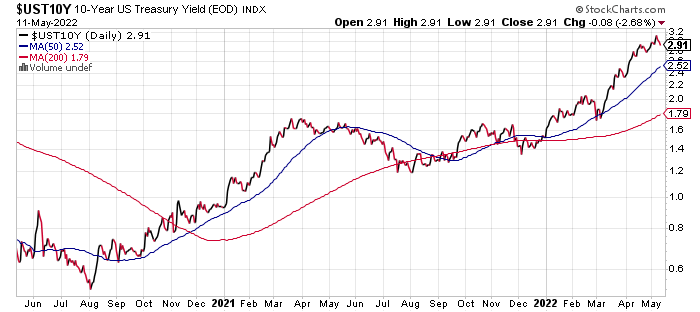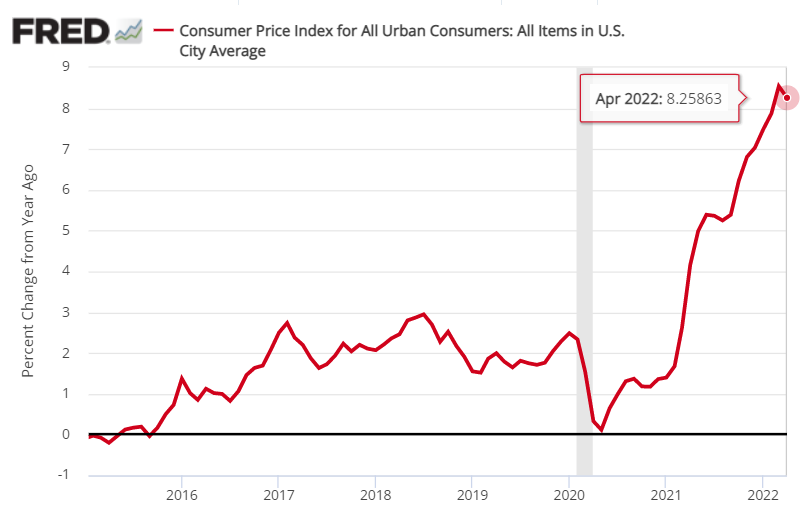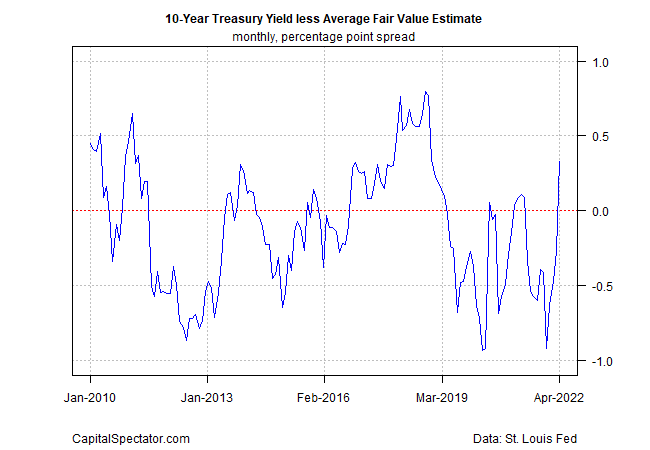For the first time in 11 months, the US Treasury 10-year yield is above CapitalSpectator.com’s fair-value model estimate of the benchmark rate.
That doesn’t ensure that the 10-year yield will stop rising, of course, but it provides a new talking point for considering why this key rate’s upward bias may moderate or even reverse in the near term.
In fact, there’s a hint of moderation and maybe reversal in recent market action. The 10-year rate has declined every day this week through Wed., May 11, leaving the yield at 2.91% yesterday.

The latest downturn for the 10-year rate could be noise, of course. Indeed, the price-trend bias still points to further increases. But there’s a case for thinking that the yield increases have gone too far too fast.
That view coincides with yesterday’s news that the recent surge in US headline consumer inflation—a primary reason for higher yields—eased in April for the first time since last August on a year-over-year basis.
Inflation rose 8.3% through last month, slightly lower than March’s +8.5%. It’s too soon to conclude that we’ve seen peak inflation, but the possibility looks slightly stronger after yesterday’s update, although it'll take several months at the least to confirm or reject this possibility.

Factors that suggest inflation may have peaked include slowing economic growth, which is due in part to ongoing blowback from the Ukraine war, which appears set to continue for the foreseeable future.
Although recent estimates of US GDP activity for the second quarter show signs of a rebound from the slight contraction in Q1, most estimates for near-term growth remain modest while some economists are forecasting a recession at some point, perhaps starting as early as this year’s second half.
Meanwhile, the average estimate for my three models of the 10-year Treasury yield for April ticked up to 2.42%—a three-year high.
The market increase in the 10-year rate was sharper, however, and so for the first time in 11 months the market rate exceeds the model estimate. That’s a sign that the pressure for higher rates may be easing.

The next chart offers a clearer review of how the market rate compares with the average model estimate. This chart shows that April’s monthly average of the 10-year rate exceeded the fair-value model average by 33 basis points—the most in over three years.

None of this means the market rate for the 10-year yield will stop rising. But for the moment, the case for expecting the strong upside trend to continue in line with recent history looks less compelling.
